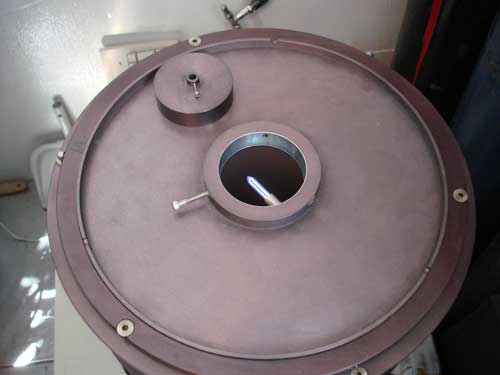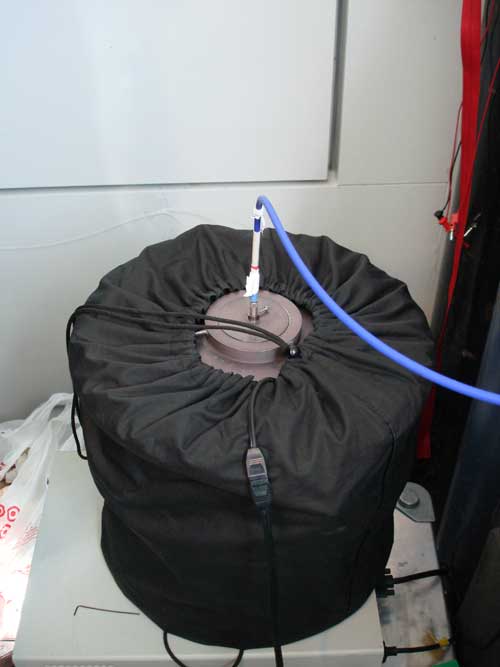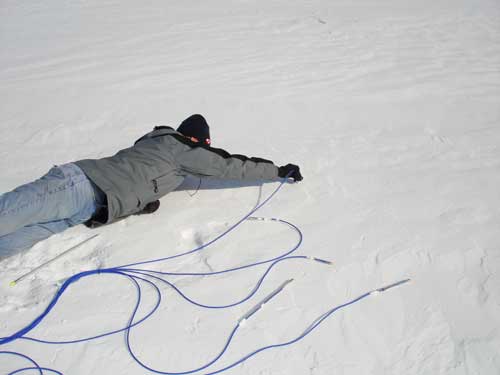Yesterday, before starting the Snowbird experiment, all five fiber optics needed to be calibrated. Learning how to calibrate the fiber optics made me realize that I need to be more aware of my own lab equipment, even our triple beam balances. The calibration stand allowed for several light sources to be used to calibrate the ultraviolet and visible wavelengths. Both the software and the calibration equipment were designed by scientists on this project. One of the light sources was a mercury vapor lamp from which three separate wavelengths are emitted is used to calibrate the color (wavelength) of light being measured.

 calibration tool
calibration tool
Each fiber optic casing is a different length to be inserted into the snow: 9.1 cm, 11.2 cm, 16.1 cm, 21.2 cm, 36.4 cm. These fiber optics will help determine the intensity of ultraviolet radiation. They gather light which is transmitted to a prism, which in turn separates the light. One wavelength at a time is analyzed by the detector for an average of 800 measurements before the prism is rotated for the next wavelength. This repeats 500 times in thirty seconds for each fiber optic. A switch moves to allow light from the next fiber optic and the process and data collection continues. Wavelengths are measured from 280-560 nanometer wavelengths. So we get a depth profile of sunlight in the snow every 2.5 minutes.
 inserting fiber optics into snow
inserting fiber optics into snow
So what is this telling us? Sunlight does not penetrate very far into the snow and sunlight provides the energy which drives many of the chemical reactions in the snow. The team of photochemistry scientists are all studying the chemical interactions in this shallow zone of snow accumulation.

